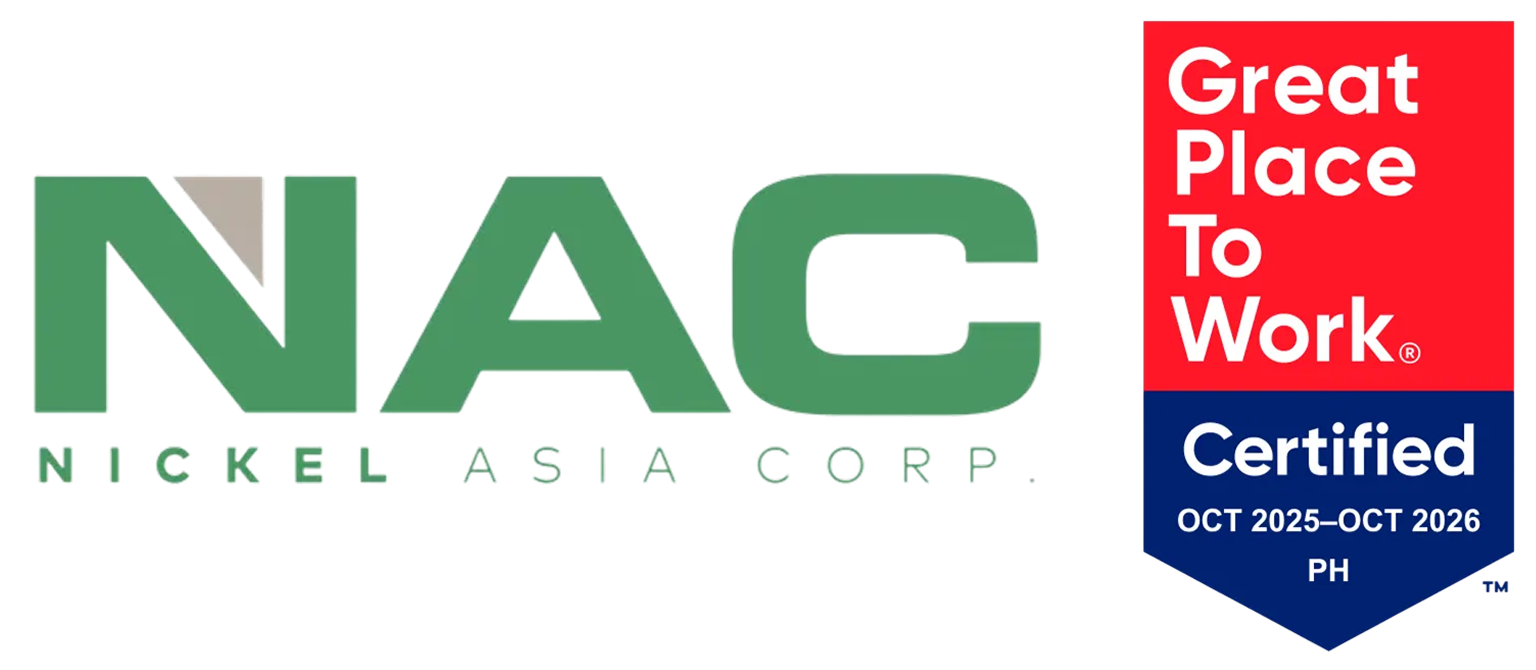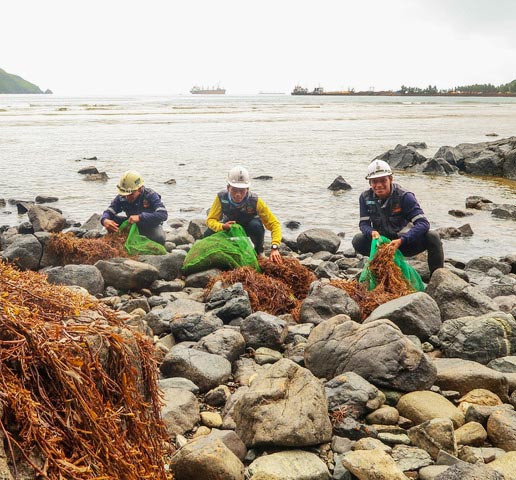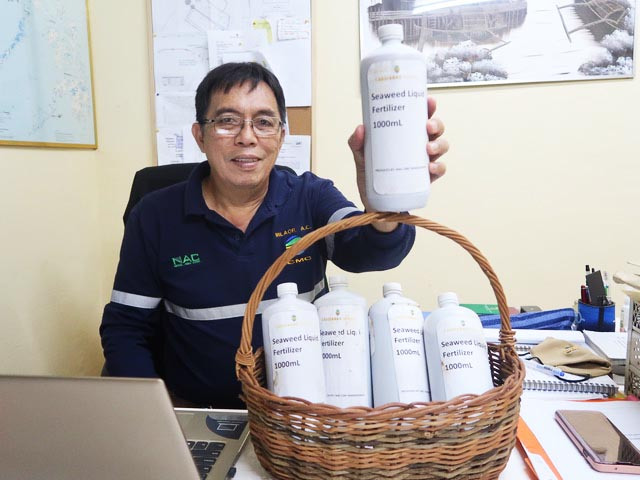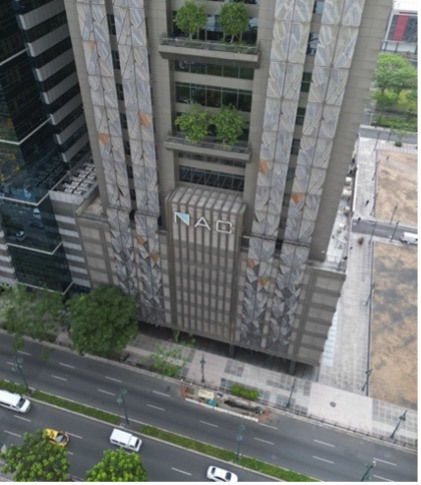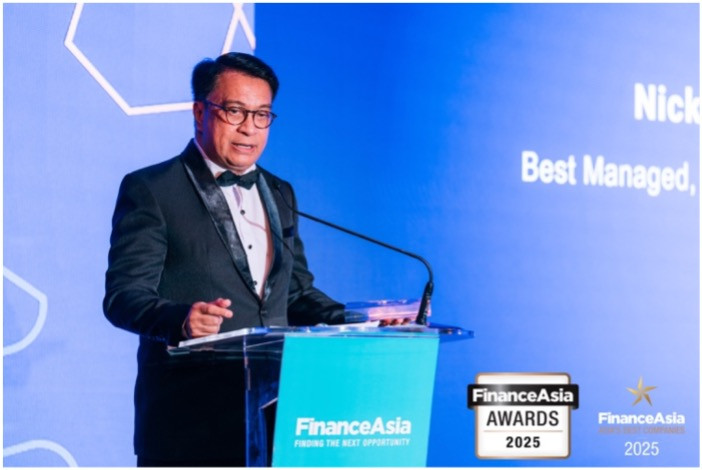Cagdianao Mining Corp. (CMC) is ahead of the pack in the mining industry in heeding the struggle against the problems caused by *sargassum* a brown seaweeds locally known as “*samo*” that are washed ashore.
Cagdianao Mining Corp. (CMC) is ahead of the pack in the mining industry in heeding the struggle against the problems caused by *sargassum* a brown seaweeds locally known as “*samo*” that are washed ashore.
Dinagat Islands fishermen complain about *sargassum debris* as ‘pest’ because nets and boat propellers get tangled with these and it is difficult to fish when there are an abundance of these ocean debris.
The sargassum debris smells like rotten eggs when they rot, threaten the turtle population and drive away the fish, pollute the shores and, yes, turn off tourists.
Economies that depend largely on tourism and marine resources, such as the Carribean region and the coastal parts of America and Europe, take the threats of *sargassum* as a national emergency.
Recent reports say that “the sargassum in the Central West Atlantic through the Caribbean increased from 8.7 million tons in May to 12.7 million tons in June – 46 percent more than in 2019.”
It is believed that large sargassum waves are caused by the warming of the ocean due to climate change and this is quickly becoming a serious economic and ecological problem.
CMC, a subsidiary of Nickel Asia Corp. (NAC), responds to this global challenge by creating ways to help the communities address their own *sargassum* debris problems.
The company's Mine and Environment Protection and Enhancement Office (MEPEO) startedexperimenting on the viability of using sargassum extracts as fertilizers to be used in the mining company’s mined out areas.
The experiment led to the development of CMC’s very own Sargassum Liquid Fertilizer (SLF) using the sargassum debris gathered from the shorelines around the mine site.
Less than two years since the start of the experiment, CMC now proudly shows off the SLF being used as organic fertilizers for most of the planting materials, or the seedlings, being groomed at the CMC nurseries and to be planted at the mining company’s mined out areas.
“The challenge of the sargassum debris in Dinagat Islands has not yet reached crisis level like in other countries but CMC is already designing ways to help the communities address their own challenges with the debris,” said Engr. Arnilo C. Milaor, Resident Mine Manager for CMC.
According to Jessie Dumanig, CMC’s dedicated agriculturist, the SLF proves very successful in growing the crops in the mining company’s rehabilitated area.
“As a matter of fact the recorded harvest in 2019 was almost 500 kilos of fruits and vegetables such as pepper, bitter gourd, eggplant, tomato, corn, mash melon, and cabbage, from our demonstration farms using the SLF, and, in 2020, to date, we have a record of some 500 kilos of fruits and vegetables from the agroforestry demo gardens in the mine site, exclusively using our organic SLF,” Dumanig exclaimed.
Dumanig’s laboratory test results prove that SLF is rich in nitrogen, phosphorous and potassium – nutrients that are essential for plants to achieve maximum growth potential.
“We are very excited! Future plans include the introduction of the SLF to the local farmers, we will introduce to the Dinagatnon this organic fertilizer, which is a product of research and technology at CMC," Dumanig expounds.
“As a responsible mining company, we wish to be one with environmentalists and scientists in other countries, doing our part by helping the communities in Dinagat Islands understand and address this global environmental concern,” said Milaor.
CMC is located in the municipality of Cagdianao, at the northeastern side of the province of Dinagat Islands. Its area of operations is within the Surigao Mineral Reservation.
